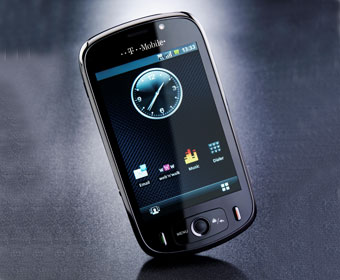T-Mobile has finger on Android Pulse
Wireless operator T-Mobile was cheerleading for the Android platform on Thursday morning, unveiling its third handset based on the OS and promising many more to come.
September 3, 2009

Wireless operator T-Mobile was cheerleading for the Android platform on Thursday morning, unveiling its third handset based on the Google OS and promising many more to come.
At a London briefing, T-Mobile UK lifted the curtain on the Android Pulse – a mass market smartphone built exclusively for the operator by Chinese vendor Huawei.
The handset itself boasts all the expected smartphone features – 3G HSPA, wifi, a 3.2 megapixel camera, full touchscreen interface, GPS and compass – and will be pitched to T-Mobile’s prepay customers. The gadget will cost £179.99 on prepay, and users can get one month’s unlimited data transfer for £5. Contract subscribers will also be able to get their hands on the device but T-Mobile will only release details of those tariffs closer to the October launch of the Pulse.
T-Mobile was early to the Android party, launching the world’s first Android handset, the G1 from HTC, as well as the G2/Magic. At the Pulse launch Nicola Shenton, T-Mobile UK’s acting head of device marketing was singing the praises of Android, saying that one fifth of the operator’s handset sales to postpaid consumers are Android-based devices.
In fact, “T-Mobile expects Android to outstrip all other operating systems in terms of sales by 2013,” Shenton said. “We really believe in Android, and we anticipate there will be around 20 Android-based handsets available worldwide [not just from T-Mobile] by the end of 2009,” she added.
Huawei, which has a reasonable foothold in the handset space as a white label manufacturer, also has nothing but good things to say about Android, with Glory Chueng of Huawei’s terminals division claiming that the platform is a “dream to work with because it’s very stable and easy to customise.”
For the development of the Pulse, Huawei and T-Mobile have collaborated on a ‘canvas’-based interface, which features six different home screens or desktops as default. As Android continues to mature, T-Mobile reckons customisation will be the driving force with hardware becoming the main differentiator between high and low end devices, while a smartphone-type software experience becomes the norm across the board.
“Android has an early advantage in being a truly open platform, and we are seeing rivals such as Symbian and Windows make movements in this direction too,” said Shenton. “Apple has done the industry a favour by promoting customisation and apps and this will help the smartphone experience to filter down through the mid and low tier range of devices.”
About the Author(s)
You May Also Like









.png?width=300&auto=webp&quality=80&disable=upscale)

_1.jpg?width=300&auto=webp&quality=80&disable=upscale)


.png?width=800&auto=webp&quality=80&disable=upscale)